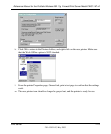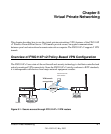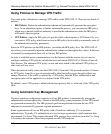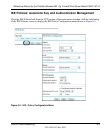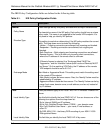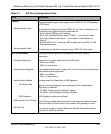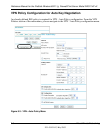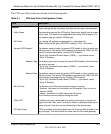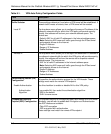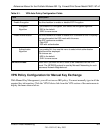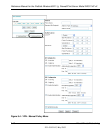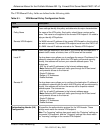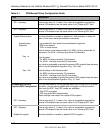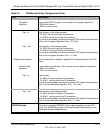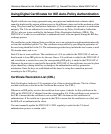
Reference Manual for the ProSafe Wireless 802.11g Firewall/Print Server Model FWG114P v2
Virtual Private Networking 8-7
201-10301-02, May 2005
The VPN Auto Policy fields are defined in the following table.
Table 8-1. VPN Auto Policy Configuration Fields
Field Description
General
These settings identify this policy and determine its major characteristics.
Policy Name The descriptive name of the VPN policy. Each policy should have a unique
policy name. This name is not supplied to the remote VPN endpoint. It is
only used to help you identify VPN policies.
IKE Policy The existing IKE policies are presented in a drop-down list.
Note: Create the IKE policy BEFORE creating a VPN - Auto policy.
Remote VPN Endpoint The address used to locate the remote VPN firewall or client to which you
wish to connect. The remote VPN endpoint must have this FWG114P v2’s
Local IP values entered as its “Remote VPN Endpoint.”
• By its Fully Qualified Domain Name (FQDN) — your domain name.
• By its IP Address.
Address Type The address type used to locate the remote VPN firewall or client to which
you wish to connect.
• By its Fully Qualified Domain Name (FQDN) — your domain name.
• By its IP Address.
Address Data The address used to locate the remote VPN firewall or client to which you
wish to connect. The remote VPN endpoint must have this FWG114P v2’s
Local Identity Data entered as its “Remote VPN Endpoint.”
• By its Fully Qualified Domain Name (FQDN) — your domain name.
• By its IP Address.
SA Life Time The duration of the Security Association before it expires.
• Seconds - the amount of time before the SA expires. Over an hour is
common (3600).
• Kbytes - the amount of traffic before the SA expires.
One of these can be set without setting the other.
IPSec PFS
If enabled, security is enhanced by ensuring that the key is changed at
regular intervals. Also, even if one key is broken, subsequent keys are no
easier to break. Each key has no relationship to the previous key.
PFS Key Group If PFS is enabled, this setting determines the DH group bit size used in the
key exchange. This must match the value used on the remote gateway.



